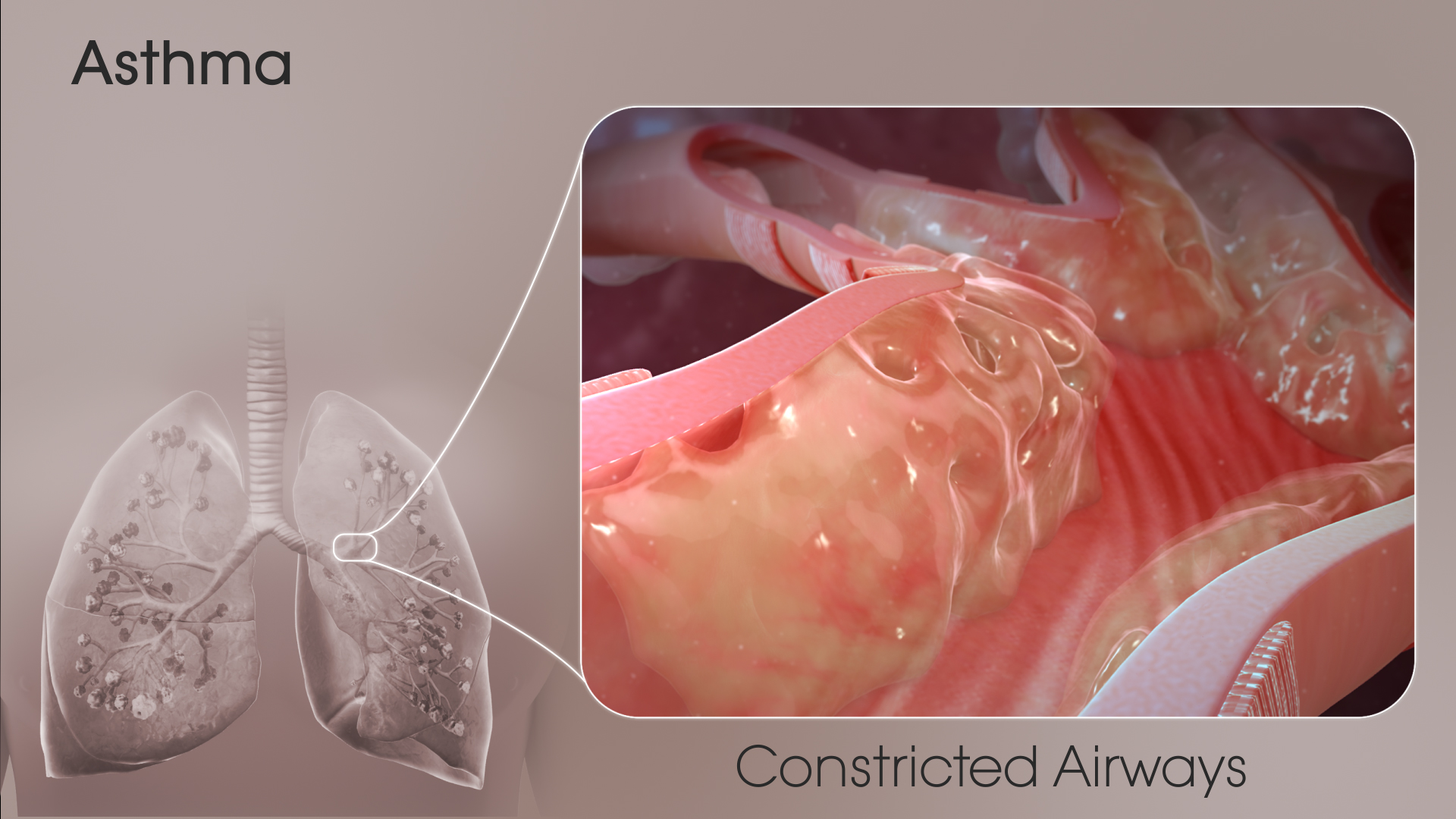The World Health Organization lists Asthma as the third most life-threatening disease affecting children. Already about 26 million people in the US suffer from it, one-third being children. 2, 6 Breathing difficulties and incessant coughing make daily life activities challenging for those with the disease. Although asthma is largely a hereditary disease, of late, it’s onset is occurring because of environmental factors.7 Learning natural therapeutic techniques can be useful for children to counteract environmental triggers. This would help them reduce the frequency of flare-ups, and depend less on medication.
Asthma: definition, types and causes
Asthma genes induce immune overreactions in children. The immune system releases immunoglobulin E, a specialized antibody that induces constriction of airways. Cells lining these airways develop mucus to prevent damage of the inner tissues. Airway constriction limits the total air pass through, making the person feel short of breath. An allergic reaction in the form of chronic inflammation results from repeated occurrences, marking the onset of asthma.
Besides allergy-induced, less common types also exist. The common triggers are food additives, fog, dust, smoke, and pollen. 3 Elevated physical activity can also result in exercise-induced asthma. When a person experiences symptoms only during sleep, doctors call it nocturnal asthma.
AIn adults it begins due to hormonal changes, viral infections, and moisture.1, 4

Symptoms
Unlike bronchitis symptoms that continue long-term, symptoms of asthma resemble most respiratory illnesses- intermittent cough with sputum, wheezing, chest pain and shortness of breath.
An attack further exacerbates these symptoms. It starts with breathlessness and continuous coughs. Chest muscles contract, limiting the airflow to the lungs. Externally, lips and fingernails turn blue while coughing and wheezing continues. This makes talking or movement very difficult and requires immediate medical help.
Diagnosis
Physicians diagnose the condition primarily using a spirometry test. This checks the reception and passage of air to the lungs. They also use other detection methods to check lung function with respect to time. Also, immunoglobulin E levels indicate the hypersensitivity response.
Therapy
Asthma is a lifelong condition and medications offer only symptomatic relief. Some medicines relax the airway muscles allowing more oxygen to pass, while others inhibit mucus formation and inflammation. These are liquids that can be sprayed or taken in a powder form through inhalers. Following the prescribed medicine routine ensures effectiveness of treatment and missing medication doses can trigger a sudden attack.
Historically, asthmatic children were forced to stay indoors. However, recent studies advocate the exposure to new environments. 6, 7
Also, studies show that using antibiotics for allergies inhibits the body from acquiring lifelong immunity. 6,7 No wonder allergies affect urban children more than those residing near farms and fields. 6, 7 Parents should take their children close to animal dander and pollen so that the child’s immune system stops identifying these as asthma triggers. 6, 7
Some asthmatics combat symptoms using natural methods. A new breathing technique “Buteyko breathing” has shown remarkable benefits. 4 This method restores normal breathing patterns and increases blood’s oxygen carrying capacity. 4 Regularly consuming ginger and honey with hot water relieves symptoms by inducing anti-inflammatory responses. 5, 7
References
1. Adult-Onset Asthma2. What Is Asthma?
3. Asthma Causes and Triggers
4. Are You Allergic to Rain?
5. Ginger May Benefit Patients with Asthma
6. Antibiotic Resistance — What Promotes It, and How Can We Beat It?
7. How to Address Allergies and Asthma Symptoms as “Worst Allergy Season Ever” Begins
Cholesterol Truths You Should Know
Cholesterol remains one of the most incomprehensible health topics in the 21st century. Myths surrounding cholesterol exist since the early 1900s when Rudolf Virchow theorized that excessive lipids in the blood, a condition known as Hyperlipidemia, can trigger heart problems. Read More..








